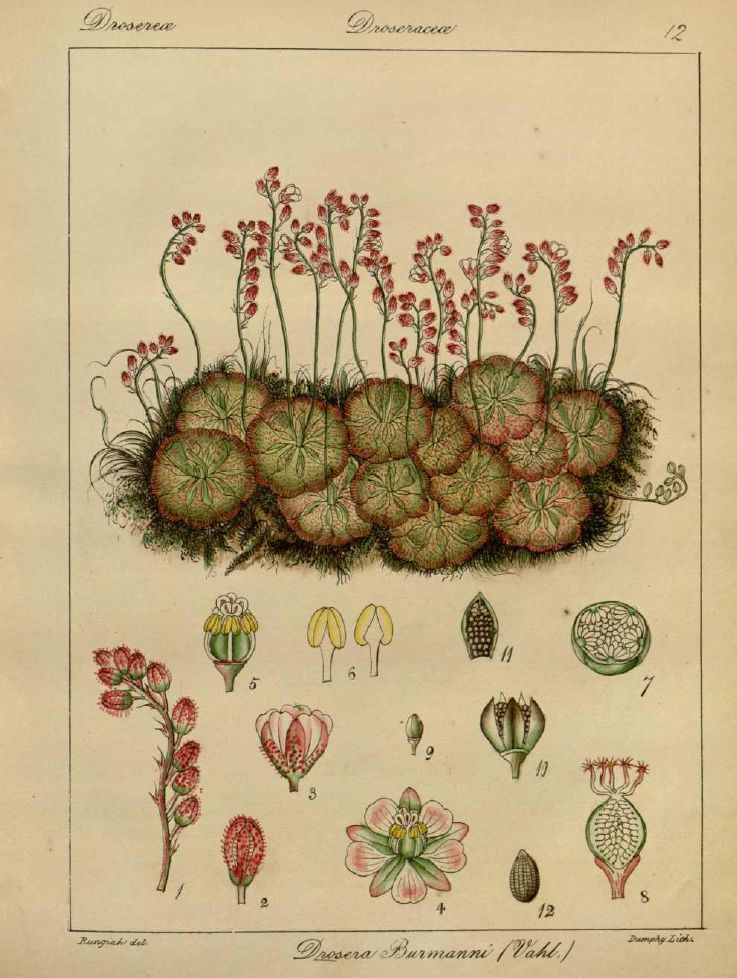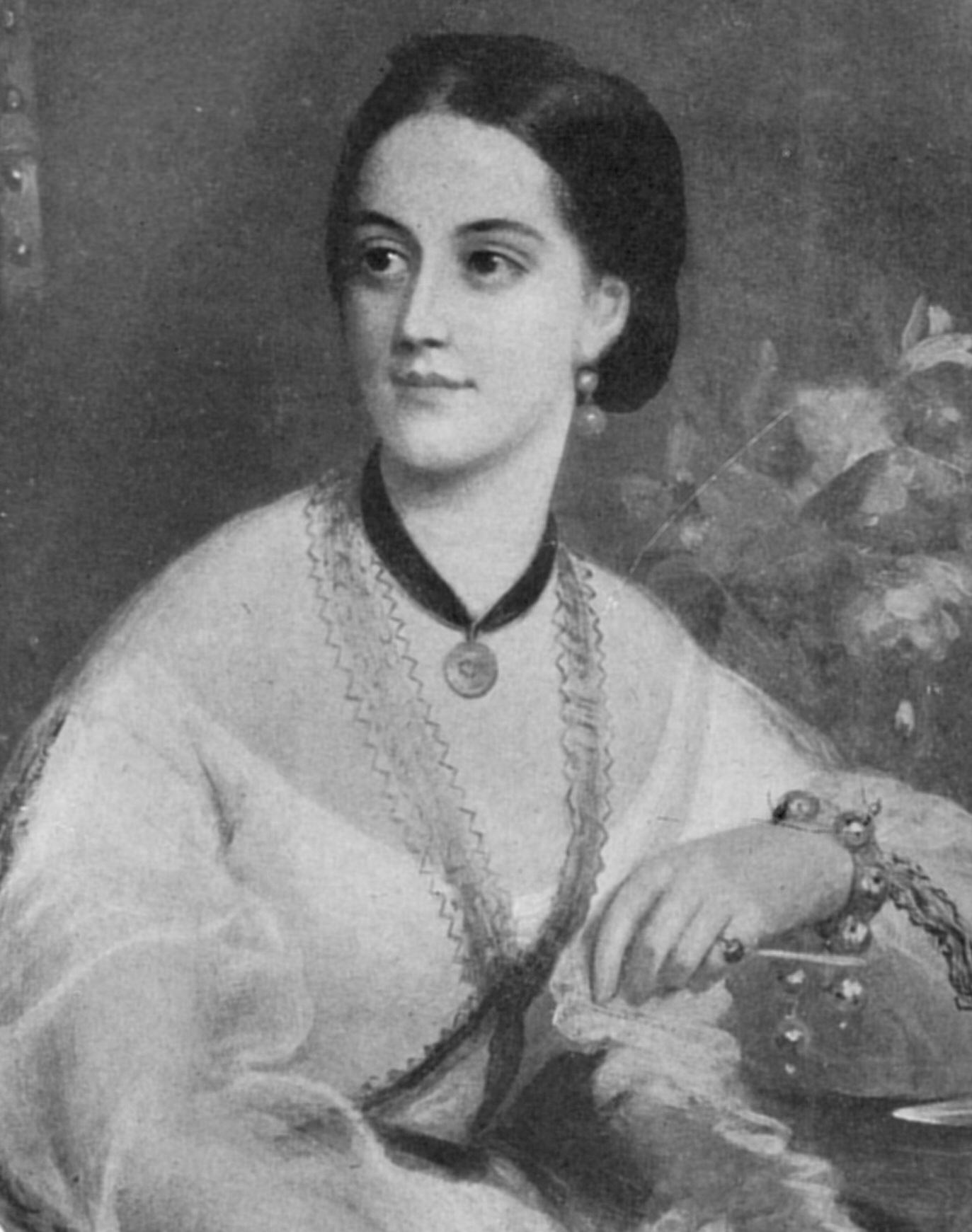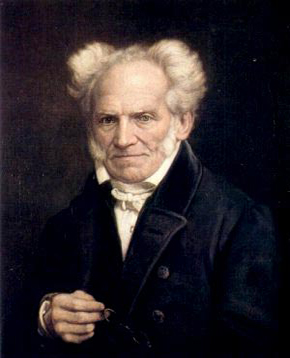|
Anne Wilmot-Horton
Anne Beatrix Wilmot-Horton (''née'' Horton, 1788 – 1871) was an English amateur botanist who was the dedicatee of the plant genus Hortonia and of Lord Byron’s poem 'She Walks in Beauty'. Early life and family She was born in 1788, the daughter of Eusebius Horton of Catton Hall, Derbyshire, and was co-heir to the estate with her sister Frances. In 1806 she married Sir Robert John Wilmot, 3rd baronet. The couple hyphenated their surnames at the request of Anne’s father’s will in 1823. They had eight children, one of whom died in infancy. 'She Walks in Beauty' On 11 June 1814, Lord Byron (who was her husband’s cousin) saw Anne in mourning-clothes at a party, and composed 'She Walks in Beauty' about her the next day. Botany While her husband was governor of Ceylon, now Sri Lanka, Anne gained 'extensive knowledge of Ceylon plants.' Botanist Robert Wight Robert Wight (6 July 1796 – 26 May 1872) was a Scottish surgeon in the East India Company, whose profes ... [...More Info...] [...Related Items...] OR: [Wikipedia] [Google] [Baidu] |
Thomas Lawrence
Sir Thomas Lawrence (13 April 1769 – 7 January 1830) was an English people, English portrait painter and the fourth president of the Royal Academy. A child prodigy, he was born in Bristol and began drawing in Devizes, where his father was an innkeeper at the Bear Hotel, Devizes, Bear Hotel in the Market Place, Devizes, Market Square. At age ten, having moved to Bath, he was supporting his family with his pastel portraits. At 18, he went to London and soon established his reputation as a portrait painter in oil paint, oils, receiving his first royal commission, Portrait of Queen Charlotte (Lawrence), a portrait of Queen Charlotte, in 1789. He stayed at the top of his profession until his death, aged 60, in 1830. Self-taught, he was a brilliant draughtsman and known for his gift of capturing a likeness, as well as his virtuoso handling of paint. He became an associate of the Royal Academy in 1791, a full member in 1794, and president in 1820. In 1810, he acquired the generou ... [...More Info...] [...Related Items...] OR: [Wikipedia] [Google] [Baidu] |
She Walks In Beauty
"She Walks in Beauty" is a short lyrical poem in iambic tetrameter written in 1814 by Lord Byron, and is one of his most famous works. It is said to have been inspired by an event in Byron's life. On 11 June 1814, Byron attended a party in London. Among the guests was Mrs. Anne Beatrix Wilmot, wife of Byron's first cousin, Sir Robert Wilmot. He was struck by her unusual beauty, and the next morning the poem was written.Cummings, Michael J. (2008)Byron's She Walks in Beauty at Cummings Study Guides. Retrieved 10 July 2014 It is thought that she was the first inspiration for his unfinished epic poem about Goethe Johann Wolfgang (von) Goethe (28 August 1749 – 22 March 1832) was a German polymath who is widely regarded as the most influential writer in the German language. His work has had a wide-ranging influence on Western literature, literary, Polit ..., a personal hero of his. In this unpublished work, which Byron referred to in his letters as his magnum opus, he swit ... [...More Info...] [...Related Items...] OR: [Wikipedia] [Google] [Baidu] |
Hortonia (plant)
''Hortonia'' is a genus of trees and shrubs of the family Monimiaceae. It is endemic to Sri Lanka Sri Lanka, officially the Democratic Socialist Republic of Sri Lanka, also known historically as Ceylon, is an island country in South Asia. It lies in the Indian Ocean, southwest of the Bay of Bengal, separated from the Indian subcontinent, ... and comprises three species. Species * '' Hortonia angustifolia'' Trimen. * '' Hortonia floribunda'' Wight. ex Arn. * '' Hortonia ovalifolia'' Wight. References * * * * * http://www.theplantlist.org/1.1/browse/A/Monimiaceae/Hortonia/ Monimiaceae genera Endemic flora of Sri Lanka {{Laurales-stub ... [...More Info...] [...Related Items...] OR: [Wikipedia] [Google] [Baidu] |
Robert Wilmot-Horton
Sir Robert John Wilmot-Horton, 3rd Baronet, GCH, PC, FRS (21 December 1784 – 31 May 1841), born Robert John Wilmot, was a British politician, sociopolitical theorist, and colonial administrator. He was Under-Secretary of State for War and the Colonies between 1821 and 1828, and Governor of Ceylon between 1831 and 1837. He is most widely known for his writings on assisted emigration to the colonies of the British Empire. Early life and education Robert John Wilmot was born on 21 December 1784. He was the only son of Sir Robert Wilmot, 2nd Baronet, of Osmaston, near Derby (see Wilmot baronets), and his first wife Juliana Elizabeth (née Byron). He was educated at Eton, and at Christ Church, Oxford. Career Wilmot-Horton was a Canningite supporter of free trade and Catholic emancipation among the Tories. He sat as a Member of Parliament (MP) for Newcastle-under-Lyme from 1818 until 1830. He served under the Earl of Liverpool, George Canning and Lord Goderich as Under- ... [...More Info...] [...Related Items...] OR: [Wikipedia] [Google] [Baidu] |
Lord Byron
George Gordon Byron, 6th Baron Byron (22 January 1788 – 19 April 1824) was an English poet. He is one of the major figures of the Romantic movement, and is regarded as being among the greatest poets of the United Kingdom. Among his best-known works are the lengthy narratives ''Don Juan (poem), Don Juan'' and ''Childe Harold's Pilgrimage''; many of his shorter lyrics in ''Hebrew Melodies'' also became popular. Byron was educated at Trinity College, Cambridge, before he travelled extensively in Europe. He lived for seven years in Italy, in Venice, Ravenna, Pisa and Genoa after he was forced to flee England due to threats of lynching. During his stay in Italy, he would frequently visit his friend and fellow poet Percy Bysshe Shelley. Later in life, Byron joined the Greek War of Independence to fight the Ottoman Empire, for which Greeks revere him as a folk hero. He died leading a campaign in 1824, at the age of 36, from a fever contracted after the First Siege of Missolonghi, f ... [...More Info...] [...Related Items...] OR: [Wikipedia] [Google] [Baidu] |
Catton Hall
Catton Hall is a country house near the boundary between Derbyshire and Staffordshire, within the civil parish of Catton. It gives its postal address as Walton-on-Trent although there was a village of Catton at one time. It is a Grade II* listed building. The Manor of Catton was acquired at the beginning of the 15th century by Roger Horton. Members of the family served as High Sheriff of Derbyshire. In 1765 Christopher Horton (d.1768) married Anne, daughter of Simon Luttrell, 1st Earl of Carhampton and later wife of Prince Henry, Duke of Cumberland and Strathearn (brother of King George III). In the 19th century Anne Beatrix Horton, heiress of the estate, married Robert Wilmot thus creating the Wilmot-Horton family. On the death of the fifth Wilmot-Horton Baronet in 1887, the estate passed to his niece Augusta-Theresa who married in 1851 to Rev. Arthur Henry Anson, rector of Potterhanworth, Lincolnshire and son of Hon. Rev. Frederick Anson, Dean of Chester, born at the Ans ... [...More Info...] [...Related Items...] OR: [Wikipedia] [Google] [Baidu] |
A Hand-book To The Flora Of Ceylon (Plate LXXVIII) (6430659507)
A, or a, is the first letter and the first vowel letter of the Latin alphabet, used in the modern English alphabet, and others worldwide. Its name in English is '' a'' (pronounced ), plural ''aes''. It is similar in shape to the Ancient Greek letter alpha, from which it derives. The uppercase version consists of the two slanting sides of a triangle, crossed in the middle by a horizontal bar. The lowercase version is often written in one of two forms: the double-storey and single-storey . The latter is commonly used in handwriting and fonts based on it, especially fonts intended to be read by children, and is also found in italic type. In English, '' a'' is the indefinite article, with the alternative form ''an''. Name In English, the name of the letter is the ''long A'' sound, pronounced . Its name in most other languages matches the letter's pronunciation in open syllables. History The earliest known ancestor of A is ''aleph''—the first letter of the Phoenician ... [...More Info...] [...Related Items...] OR: [Wikipedia] [Google] [Baidu] |
Sri Lanka
Sri Lanka, officially the Democratic Socialist Republic of Sri Lanka, also known historically as Ceylon, is an island country in South Asia. It lies in the Indian Ocean, southwest of the Bay of Bengal, separated from the Indian subcontinent, Indian peninsula by the Gulf of Mannar and the Palk Strait. It shares a maritime border with the Maldives in the southwest and India in the northwest. Sri Jayawardenepura Kotte is the legislative capital of Sri Lanka, while the largest city, Colombo, is the administrative and judicial capital which is the nation's political, financial and cultural centre. Kandy is the second-largest urban area and also the capital of the last native kingdom of Sri Lanka. The most spoken language Sinhala language, Sinhala, is spoken by the majority of the population (approximately 17 million). Tamil language, Tamil is also spoken by approximately five million people, making it the second most-spoken language in Sri Lanka. Sri Lanka has a population of appr ... [...More Info...] [...Related Items...] OR: [Wikipedia] [Google] [Baidu] |
Robert Wight
Robert Wight (6 July 1796 – 26 May 1872) was a Scottish surgeon in the East India Company, whose professional career was spent entirely in southern India, where his greatest achievements were in botany – as an economic botanist and leading taxonomist in south India. He contributed to the introduction of Gossypium barbadense, American cotton. As a taxonomist he described 110 new genera and 1267 new species of flowering plants. He employed Indian botanical artists to illustrate many plants collected by himself and Indian collectors he trained. Some of these illustrations were published by William Jackson Hooker, William Hooker in Britain, but from 1838 he published a series of illustrated works in Madras including the uncoloured, six-volume ''Icones Plantarum Indiae Orientalis'' (1838–53) and two hand-coloured, two-volume works, the ''Illustrations of Indian Botany'' (1838–50) and ''Spicilegium Neilgherrense'' (1845–51). By the time he retired from India in 1853 he had p ... [...More Info...] [...Related Items...] OR: [Wikipedia] [Google] [Baidu] |
John Fisher, 1st Baron Fisher
Admiral of the Fleet (Royal Navy), Admiral of the Fleet John Arbuthnot Fisher, 1st Baron Fisher, (25 January 1841 – 10 July 1920), commonly known as Jacky or Jackie Fisher, was a British Admiral of the Fleet. His efforts to reform the Royal Navy helped to usher in an era of modernisation which saw the supersession of wooden sailing ships armed with muzzleloader, muzzle-loading cannon by steel-hulled battlecruisers, submarines and the first aircraft carriers. Fisher has a reputation as an innovator, strategist and developer of the navy rather than as a seagoing admiral involved in major battles, although in his career he experienced all these things. When appointed First Sea Lord in 1904 he removed from active service 150 ships which were no longer useful and set about constructing modern replacements, developing a modern fleet prepared to meet German Empire, Germany during the First World War. Fisher saw the need to improve the range, accuracy and rate-of-fire of naval gunne ... [...More Info...] [...Related Items...] OR: [Wikipedia] [Google] [Baidu] |
Sir William Parker, 1st Baronet, Of Harburn
Admiral Sir William Parker, 1st Baronet (1 January 1743 – 31 October 1802), was a British naval commander. Parker served as a Royal Navy officer during the French Revolutionary Wars. Naval career William Parker's father, Augustine Parker, had been mayor of Queenborough, Isle of Sheppey, Kent and a commander of one of the king's yachts. William Parker entered the navy about 1756 and in 1758 was on during the capture of Louisbourg in Canada and the capture of Quebec the following year. He was promoted to lieutenant in 1762. For a time he served off the coast of Newfoundland and was promoted to commander in 1763. In 1777 he went to the West Indies where he served under Byron. He served aboard various ships and as commodore and commander-in-chief on the Leeward Islands Station between 1787 and 1789. During the 1790s he served under Admiral Lord Howe. In 1794 he commanded at the Battle of The Glorious First of June and was promoted to Rear-Admiral. He saw service o ... [...More Info...] [...Related Items...] OR: [Wikipedia] [Google] [Baidu] |
1788 Births
Events January–March * January 1 – The first edition of ''The Times'', previously ''The Daily Universal Register'', is published in London. * January 2 – Georgia ratifies the United States Constitution, and becomes the fourth U.S. state under the new government. * January 9 – Connecticut ratifies the United States Constitution, and becomes the fifth U.S. state. * January 18 – The leading ship (armed tender HMS ''Supply'') in Captain Arthur Phillip's First Fleet arrives at Botany Bay, to colonise Australia. * January 22 – The Congress of the Confederation, effectively a caretaker government until the United States Constitution can be ratified by at least nine of the 13 states, elects Cyrus Griffin as its last president.''Harper's Encyclopaedia of United States History from 458 A. D. to 1909'', ed. by Benson John Lossing and, Woodrow Wilson (Harper & Brothers, 1910) p167 * January 24 – The La Perouse expedition in the ''Astrolabe'' and '' Boussole'' arrives ... [...More Info...] [...Related Items...] OR: [Wikipedia] [Google] [Baidu] |







